Q
What is the top speed of Axia?
The Perodua Axia, a top pick among Malaysia's entry-level economy cars, maxes out at around 155 to 165 km/h. Your actual top speed might vary a bit depending on the model year and specs. Take the 2023 1.0L DVVT engine version, for example – it's smoother and more fuel-efficient, but when it comes to flat-out speed, it's pretty much on par with the earlier models.
Under the hood, you've got a 1.0L three-cylinder engine, and let's be real, this little guy's designed first and foremost for zipping around the city. That said, it still holds its own on the highway with steady power delivery. Just keep in mind, it's a lightweight car, so you'll definitely notice more wind noise when you're pushing those higher speeds. For safety and to keep that fuel gauge happy, sticking to a reasonable pace is the way to go.
For Malaysian buyers, the Axia's main draws are its wallet-friendly price tag, low maintenance costs, and impressive fuel economy – we're talking about an official 21km/L. It's perfect for daily runabouts. Now, if you're craving a bit more zip, you might want to check out rivals like the Proton Saga. Its 1.3L engine gives slightly stronger acceleration. But here's the thing: the Axia still has the edge when it comes to resale value and the backing of a solid brand service network.
Special Disclaimer: This content is published by users and does not represent the views or position of PCauto.
Related Q&A
Q
What is Axia tyre size?
The tire sizes for the Perodua Axia vary depending on the specific trim level and model year. The most common spec you'll come across is 165/55 R14 – that's the standard fitment for most Axia variants, perfect for zipping around the city and saving on fuel costs.
If you step up to some of the higher - end trims, you might find 175/65 R14 tires instead. These tires offer a bit more grip and stability, especially when cornering or at higher speeds.
But picking tires isn't just about the numbers. You've got to pay attention to the tread pattern and rubber compound too. For daily commuters who mostly stick to city streets, a good all - season economy tire should be a good choice. On the other hand, if you're regularly hitting the highway for longer hauls, a touring or slightly higher - performance tire might be a better bet for that extra peace of mind.
Malaysia's weather is quite changeable, with sudden downpours. It's smart to choose tires with good water dispersion, such as those with deep grooves and a tread design that helps quickly channel water away, reducing the risk of hydroplaning on slick roads during the monsoon season.
Also, don't forget the basics: keeping an eye on your tire pressure and checking tread wear regularly. It's not just about making your tires last longer – it's a crucial safety thing too. Under - inflated or worn - out tires can cause problems, especially in the wet conditions mentioned above.
Thinking of upsizing your tires for a better look or performance? Just make sure whatever new size you choose is compatible with the Axia's stock setup. You don't want to throw off your speedometer accuracy or put extra strain on the suspension components. When in doubt, follow the manufacturer's recommendations – they know what works best for the car.
Q
What kind of car is Axia?
The Perodua Axia stands as one of Malaysia's most beloved entry-level economy cars. Launched back in 2014 by homegrown brand Perodua, it's all about delivering stellar fuel efficiency and a wallet-friendly price tag, making it a top pick for zipping around the city or handling daily family duties. Under the hood, you'll find a 1.0-liter three-cylinder engine, paired with your choice of manual or automatic transmission. It's a fuel sipper too – official figures peg it at around 21km/L. The 2023 refresh upped the ante with the Advanced Safety Assist (ASA) 3.0 system, throwing in handy features like automatic emergency braking and lane departure warning to boost safety credentials.
What makes the Axia a hit with Malaysians? Start with that approachable starting price, hovering around RM38,600, plus low maintenance costs. Its compact dimensions – a tidy 3.7 meters in length – are perfectly suited to tight city streets and those all-too-common cramped parking spots. It's worth noting that the Axia shares its platform with the Toyota Agya and Daihatsu Ayla, so it inherits that solid Japanese reliability we all know. Perodua sweetens the deal further with a five-year warranty, giving owners extra peace of mind.
For Malaysian shoppers on a budget who still want the thrill of a new car – think fresh graduates or small families – the Axia is a seriously practical choice. Factor in the super low annual road tax (just RM20!) and its potential for some fun modifications, and it's easy to see why the Axia keeps rolling off dealer lots.
Q
What size engine is the Axia?
The Perodua Axia is powered by a 1.0-liter three-cylinder naturally aspirated engine, codenamed 1KR-VE. This mill features a DOHC (Double Overhead Camshaft) setup, churning out a maximum of 67PS at 6,000rpm and 91Nm of torque at 4,400rpm. It's also equipped with Dual VVT-i (Variable Valve Timing with intelligence) technology, which plays a big part in its impressive fuel efficiency – Perodua claims it can hit 22km per liter. That makes it a really solid choice for zipping around Malaysian cities.
As Perodua's entry-level offering, the Axia's engine might not be the biggest in displacement, but don't let that fool you. Thanks to the car's lightweight design and some smart powertrain tuning, it's more than up to the task of daily driving. This is especially true in Malaysia's often congested traffic, where a smaller engine actually shines – it sips less fuel and puts out fewer emissions, which is a win-win.
Another thing worth noting is that this 1KR-VE engine isn't unique to the Axia; it also powers other Perodua models like the Myvi 1.0 variant. That means it's a tried-and-tested unit with a reputation for reliability. On top of that, maintenance and repair costs are generally quite reasonable. All in all, it makes the Axia a very compelling option for Malaysian buyers who are keeping a close eye on their budget.
Q
Is Axia 3 cylinder?
Right, the Perodua Axia comes with a 1.0-liter three-cylinder engine, and this little powerplant is all about fuel efficiency and a compact design – perfect for city driving. Especially here in Malaysia, it delivers decent performance while keeping fuel consumption low, which is a big plus in our traffic. Compared to a traditional four-cylinder, losing one cylinder makes the three-pot simpler, lighter, and that helps trim overall vehicle weight and boost fuel economy. Now, sure, three-cylinders can sometimes have a bit more vibration, but modern tech like balance shafts has really ironed that out these days. For Malaysian buyers watching their budget and wanting something economical for daily commuting, the Axia's three-cylinder is a solid, practical pick. It checks all the boxes for local emissions standards and keeps running costs down, even in stop-and-go jams. If you're worried about how smooth it is, though, I'd definitely suggest a test drive first. After all, how a car feels is pretty personal.
Q
What is the new Axia 2019?
Launched back in 2019, the Perodua Axia remains one of Malaysia's go-to choices for an affordable entry-level A-segment car. It's all about being easy on the wallet and packing solid value, making it a top pick for zipping around the city or running family errands.
Visually, it got some nips and tucks to keep things fresh – think a more modern front grille and LED daytime running lights that give it a younger, sharper look. Step inside, and the 2019 Axia upped its game with an upgraded sound system and comfier seat materials. Higher-spec trims even throw in a multifunction steering wheel and touchscreen infotainment, making those drives a bit more enjoyable.
Under the hood, you're looking at a 1.0L three-cylinder engine paired with either a 4-speed auto or 5-speed manual. The real star here? Fuel efficiency. It's a champ at sipping petrol, which is exactly what Malaysian buyers want when it comes to keeping running costs low.
Safety-wise, all Axias come standard with dual airbags, ABS, and EBD. Some models take it up a notch with Vehicle Stability Control (VSC) and Traction Control (TRC), adding that extra peace of mind on the road.
As Perodua's hometown hero, the 2019 Axia stays true to the series' roots of practicality and dependability, while those little upgrades here and there cater to folks wanting a bit more quality. If you're a Malaysian shopper on a budget but still want something that's fuel-efficient, easy to drive, and cheap to maintain, the 2019 Axia is definitely one to check out.
Q
What Segment is Perodua Axia?
The Perodua Axia belongs to the A-Segment vehicles in the Malaysian market, which is the most entry-level microcar category. It mainly targets consumers with limited budgets who prioritize fuel economy. Its body size is compact (about 3,640mm in total length and a wheelbase of 2,450mm). It is equipped with a 1.0L three-cylinder engine and paired with a D-CVT gearbox, highlighting the flexibility for urban commuting and the advantage of low cost. The official fuel consumption data shows that it can travel about 22 kilometers per liter of gasoline, meeting the needs of Malaysian consumers for economical and practical small cars.
In terms of extended knowledge, Malaysia's automobile classification standards usually refer to the European system. Besides the Axia, A-Segment models also include the Proton Saga and other vehicles. These cars are characterized by their affordable prices (the starting price of the Axia is around RM22,000 to RM49,000) and are suitable for narrow road environments. However, their safety configurations have been significantly improved in recent years. For example, all models of the 2023 new Axia come standard with ABS + EBD and dual airbags, and the top - end version is even equipped with the ASA 3.0 advanced safety assistance system, indicating that entry - level car models are gradually upgrading their technological equipment. Consumers can choose different configuration versions according to their budgets. At the same time, it is recommended to test - drive and compare the Proton Iriz in the same class or second - hand B - Segment models before purchasing a car to comprehensively evaluate the balance between space and functionality.
Q
What is the Reslae Value of Perodua Axia?
As one of the best-selling entry-level models in Malaysia, the Perodua Axia shows relatively stable resale value in the used car market. This is mainly due to advantages such as the high vehicle ownership of the brand, low maintenance costs, and good fuel economy. Depending on factors like vehicle age, mileage, vehicle condition, and configuration, Axias that are one to three years old usually retain 60% to 75% of their original price, while those that are five years old are around 40% to 50%. The specific price also needs to refer to market supply and demand and maintenance records. In addition, the durability of the Axia and its extensive service network also support its resale value.
For consumers considering buying a used Axia, it is recommended to give priority to models with complete original factory maintenance records to ensure the vehicle condition. At the same time, pay attention to the configuration differences of minor facelifts in different years. For example, models after 2022 have upgraded safety features, and such updates may have a positive impact on the resale price. In the Malaysian used car market, economical small cars like the Axia usually have a fast turnover rate and are a practical choice for car buyers with limited budgets.
Q
How Many CC is Perodua Axia?
The Perodua Axia is one of the most popular entry - level compact cars in Malaysia. The engine displacement varies across different versions. Currently, the latest model of the Axia is equipped with a 1.0 - liter three - cylinder naturally aspirated engine, with a specific displacement of 998cc. This is a common engine configuration for compact economy cars. This engine emphasizes fuel efficiency and is highly suitable for city commuting and daily use.
For Malaysian consumers, the low displacement of the Axia not only means lower fuel consumption and road tax but also meets the domestic demand for economical and practical vehicles. It's worth noting that engine displacement (CC) doesn't directly determine a vehicle's power performance. Other factors such as horsepower, torque, and gearbox tuning also need to be comprehensively considered. Although the Axia has a relatively small displacement, its lightweight body design and optimized transmission system ensure sufficient power for daily driving.
Moreover, the Malaysian market is quite sensitive to the displacement of compact cars. Therefore, engines around 1.0 liters are very common locally. They can balance performance and cost and are also suitable for the local road conditions and fuel price environment.
Q
What is the Engine in Perodua Axia?
The Perodua Axia is a highly popular economy car in the Malaysian market. It is equipped with a 1.0-liter three-cylinder naturally aspirated engine, model number 1KR-DE. This engine was jointly developed by Perodua and Toyota of Japan. It adopts the double overhead camshaft (DOHC) and variable valve timing (VVT-i) technologies. The maximum power is 67 horsepower and the maximum torque is 91 Nm. It is paired with a 4-speed automatic transmission or a 5-speed manual transmission. The overall performance is smooth and it boasts excellent fuel economy, making it very suitable for urban commuting.
The design of this engine focuses on low fuel consumption and low emissions, meeting the environmental protection requirements of the Malaysian market. At the same time, it also reduces the daily usage cost for car owners. For readers who want to learn more about automotive knowledge, although three-cylinder engines may be slightly inferior to four-cylinder engines in terms of smoothness, their lightweight and high - efficiency features make them very popular in small - displacement models. The addition of VVT - i technology further optimizes power output and fuel efficiency, which are common technological trends in modern small - displacement engines.
Q
What is the Gearbox Type of Perodua Axia?
The transmission types of the Perodua Axia include manual transmission (MT) and continuously variable transmission (CVT). The 2023 Perodua Axia E 1.0 MT is equipped with an MT transmission, offering more direct gear - shifting control for drivers who prefer the manual handling feel and bringing a more engaging driving experience. On the other hand, models like the 2023 Perodua Axia 1.0 G, 1.0 X, 1.0 SE, and 1.0 AV are equipped with a CVT transmission. Its smooth gear changes can provide a more comfortable driving and riding experience and help improve fuel economy under specific operating conditions. The diverse transmission configurations fully meet the personalized needs of different consumers.
Popular Cars
Model Year
Car Compare
Car Photo
Latest Q&A
Q
What are the most common issues with a 2017 Chevy Colorado?
Here are some common issues reported with the 2017 Chevy Colorado:
The transmission can feel a bit jerky, especially during low-speed shifts—this seems tied to the tuning of the 6-speed auto in certain models. Regular maintenance and software updates usually help. Some owners also notice brake noise, often caused by pad material or dust buildup; swapping to premium pads or a good clean typically sorts it out.
On the tech side, the infotainment screen might freeze or go black occasionally, but a reboot or software refresh generally fixes it. Keep an eye on rubber hoses in the engine bay too—they can age faster in hot, humid climates, so inspect them regularly to prevent leaks.
Diesel owners should watch the DPF (particulate filter)—short trips can clog it up over time. And since it’s a midsize truck, rust protection matters, especially near the coast. A yearly undercoat spray wouldn’t hurt.
Lastly, if you feel slight play in the steering, it’s likely worn tie-rod bushings. Catch it early to avoid bigger repairs. Most of these quirks depend on driving conditions and upkeep, so stick to the service schedule to keep the Colorado running strong.
Q
How reliable is a 2017 Colorado?
The 2017 Chevy Colorado delivers above-average reliability, with its proven 3.6L V6 gas engine and 6-speed automatic transmission combo showing good long-term durability. While major mechanical issues are rare, some owners report occasional infotainment glitches. The 2.8L Duramax turbo-diesel packs serious torque, but Malaysia's humid climate demands extra attention to DPF maintenance.
Built on a high-strength steel frame with leaf-spring rear suspension, this truck handles 700kg payloads effortlessly—perfect for hauling gear, though the ride's stiffer than competitors with multi-link setups. On the used market, well-maintained examples under 100,000km still hold up nicely; just pay special attention to transfer case fluid and 4WD engagement (crucial in Southeast Asia's rainy conditions).
Repair costs run 15-20% lower than Japanese rivals, but genuine parts can take longer to source—smart owners stock up on air filters beforehand. Bottom line? Stay on top of transmission and transfer case fluid changes, and this American workhorse won't let you down.
Q
How often should you change the oil in a 2017 Colorado?
For the oil change frequency of the 2017 Colorado model, it is recommended to follow a maintenance cycle of every 8000 to 10000 kilometers or every 6 months, whichever comes first. If the vehicle is frequently used in harsh conditions such as high temperature, high dust, or frequent short distance driving, it can be shortened to 5000 kilometers or 6 months for replacement. The 2.5L or 3.6L engine equipped in this car has high requirements for oil cleanliness and viscosity. It is recommended to use fully synthetic oil that meets the Dexos1 standard, such as 5W-30 viscosity products, to better protect the engine and improve fuel economy. It should be noted that long-term use of inferior engine oil or overdue replacement may lead to sludge accumulation, increased component wear, and even affect the lifespan of the turbocharger. During maintenance, the oil level and condition can be checked synchronously. If the oil appears visibly black or contains metal shavings, it should be repaired in a timely manner. In addition, different driving habits can also affect the lifespan of the engine oil. For example, frequent rapid acceleration or high load towing can accelerate the deterioration of engine oil performance. It is recommended that car owners adjust maintenance intervals flexibly according to their actual usage situation, while keeping complete maintenance records to maintain the value of the used car.
Q
What is the fuel economy of a 2017 Colorado?
The fuel economy of the 2017 Chevrolet Colorado varies depending on the driving method and engine configuration. When the rear wheel drive version is equipped with a 2.5-liter four cylinder engine, the city fuel consumption is about 11.2 liters/100 kilometers and the highway fuel consumption is about 8.7 liters/100 kilometers, while the four-wheel drive version of the 3.6-liter V6 engine has a city fuel consumption of about 13.1 liters/100 kilometers and a highway fuel consumption of about 9.8 liters/100 kilometers. The diesel version with a 2.8-liter turbocharged engine performs better, with a city fuel consumption of about 10.2 liters/100 kilometers and a highway fuel consumption of about 7.6 liters/100 kilometers. The fuel consumption of this type of mid size pickup truck is usually higher than that of a sedan, but Colorado performs evenly among similar models with its engine technology and lightweight design. If fuel efficiency is emphasized, the diesel version can be prioritized, and its low-speed and high torque characteristics are also suitable for load requirements. Actual fuel consumption is also affected by driving habits, road conditions, and maintenance status. Regular maintenance of tire pressure and engine condition can help optimize fuel performance.
Q
What transmission is in a 2017 Chevy Colorado?
The 2017 Chevrolet Colorado offered two transmission options depending on trim. The 2.5L four-cylinder and 3.6L V6 gasoline engines came paired with a sturdy 6-speed automatic (6L80), while the 2.8L turbo-diesel got a torque-focused 6-speed auto (6L50)—both known for their reliability and smooth shifts.
The 6L80, commonly found in GM's midsize and full-size trucks, handles higher torque loads, making it ideal for towing or off-roading. On the other hand, the more compact 6L50 better suits the diesel's low-rev, high-torque character. Tuning prioritized fuel efficiency and quick response, with manual shift mode for added control when hauling or climbing grades.
For purists, a 6-speed manual was available in select markets, though rare. Maintenance-wise, regular fluid and filter changes (every 60k–80k km, or sooner for heavy use) keep shifts crisp. While GM has since moved to 8- and 9-speed gearboxes, the Colorado’s 6-speed units still hold up as durable workhorses.
View MoreRelated News

Perodua Axia Hits 790,000 Sales: What Makes It So Popular?
AshleyAug 12, 2025
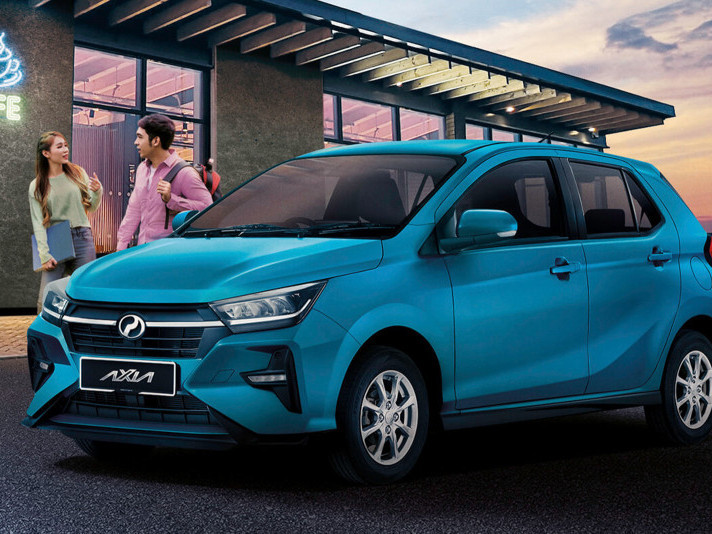
How Much is the Perodua Axia and How to Get the Best Price for Your Desired Model
WilliamMar 25, 2025
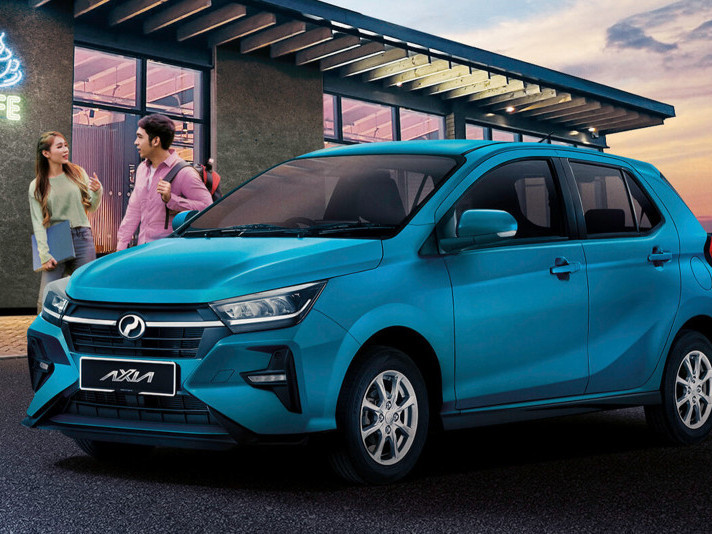
Perodua Axia’s Monthly Payments and Loan Calculation in Malaysia
WilliamMar 21, 2025
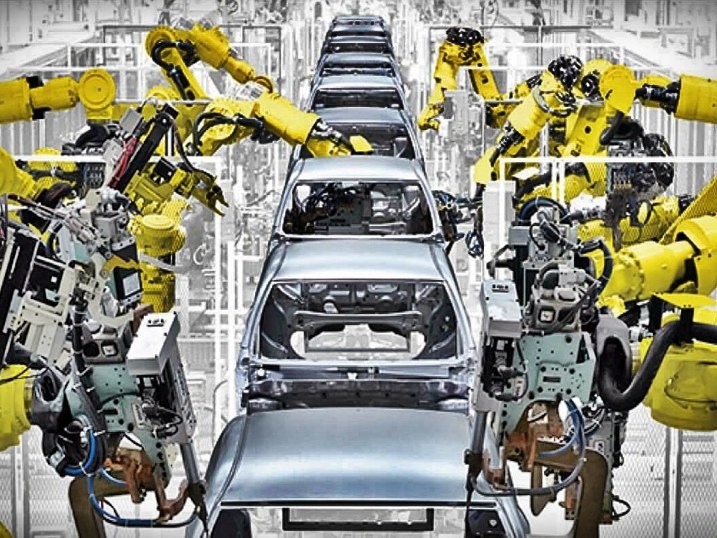
Is Perodua CKD or CBU? How to know if my car is CKD or CBU?
Kevin WongMar 4, 2025
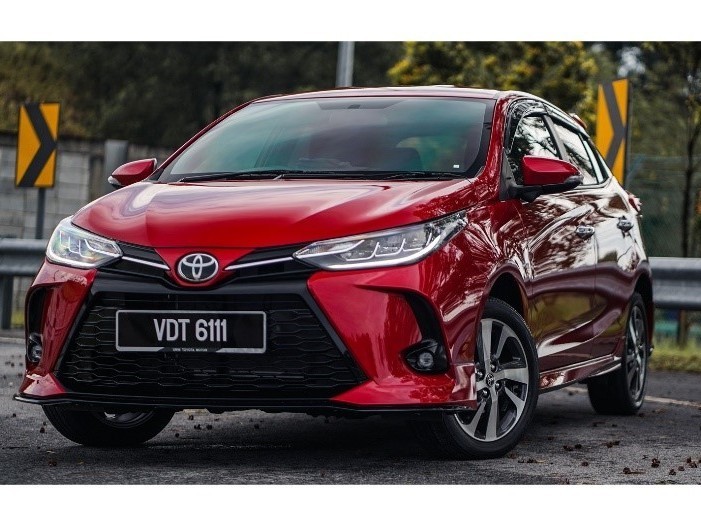
Spend the least money, buy the most suitable car: New car or used car, which one to choose?
RobertAug 28, 2024
View More





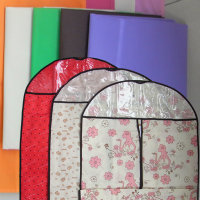




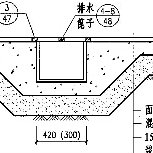
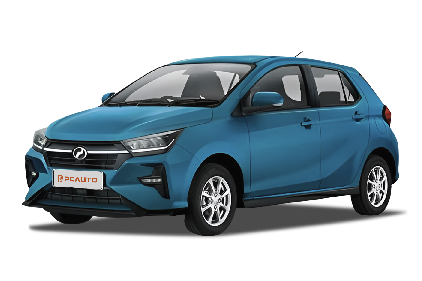




Pros
Cons